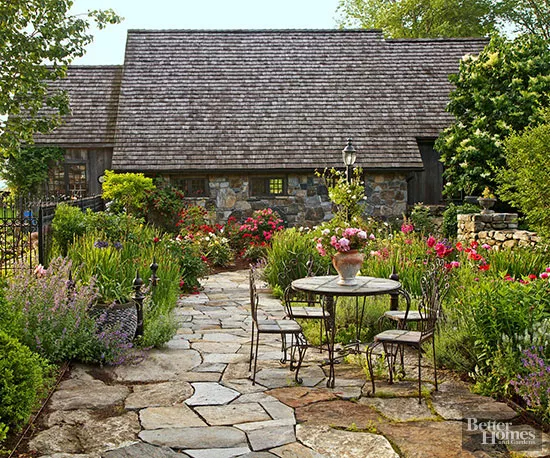Create the romance of a cottage garden with these simple tips.
1. Go Informal
Cottage gardens don’t look designed. In fact, they’re usually exuberant, free-flowering, and sometimes a bit unrestrained. To get the informal look, avoid planting in straight lines or defined patterns. Let plants cascade over paths and weave through one another. It adds to their charm. And grow self-seeding plants that pop up in unexpected places.
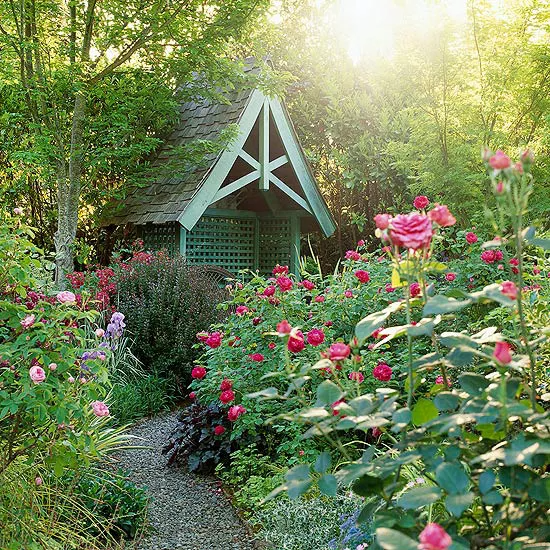
2. Grow Old-Fashioned Flowers
Cottage gardens aren’t about new varieties. They’re usually filled with the same traditional favorites your grandmother might have grown. Some popular examples include peonies, cosmos, foxgloves, snapdragons, pansies, bachelor’s buttons, columbines, bleeding hearts, and hollyhocks.
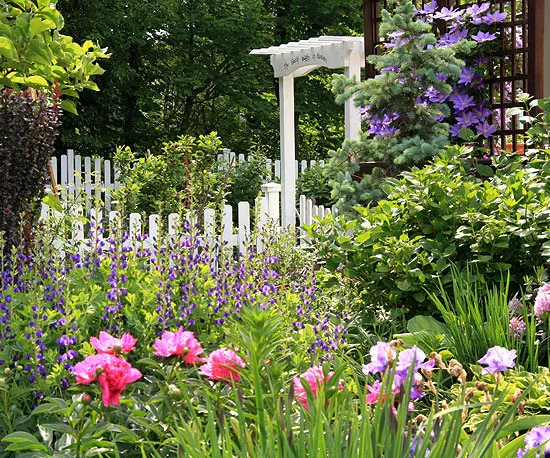
3. Select Homey Furniture
Turn your cottage garden into an outdoor living space by adding comfortable furniture. Avoid anything contemporary. Instead look for Adirondack, wicker, or painted metal shellback chairs. The furniture doesn’t have to match. Part of the charm is how informal it is, and an eclectic mix fits right in.
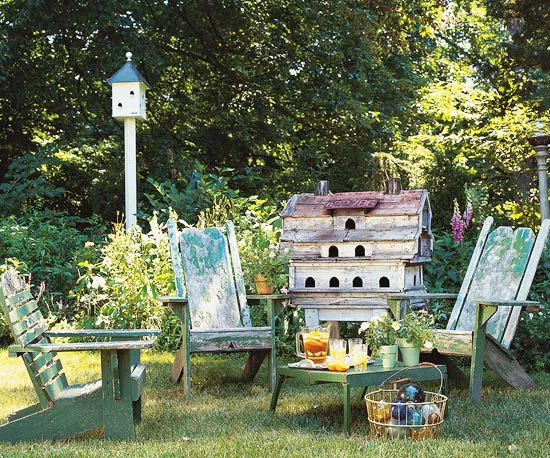
4. Look for Soft, Romantic Plants
Most cottage gardens have a romantic feel. Part of that sensibility comes from the flowers. Look for blooms in soft pastel shades. Also look for plants packed with petals, such as peonies and old roses. As an added bonus, many of these varieties are also wonderfully fragrant.
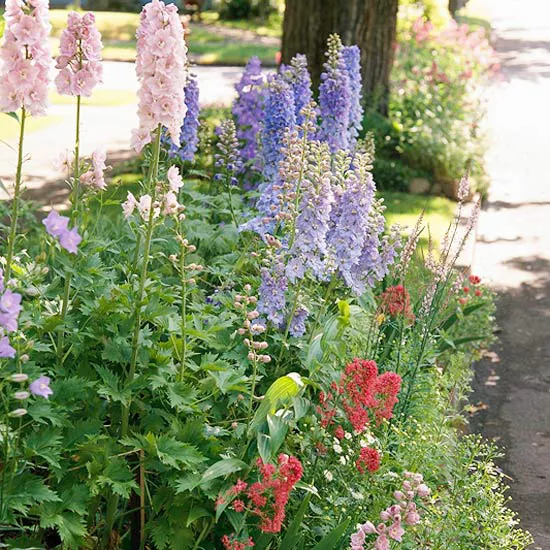
5. Look for Materials With Character
Cottage gardens often include structures made from natural or well-worn materials. Weathered wood fences, arbors, and gates are right at home among a collection of cottage plants.
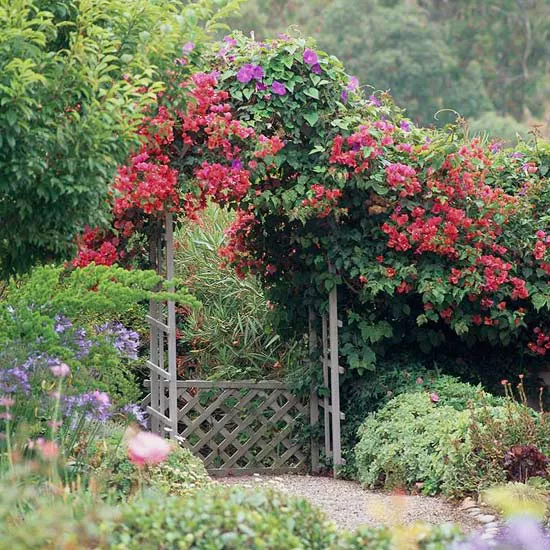
6. Use Curving Pathways
Create soft meandering pathways instead of straight, structured lines. Many paving materials work in cottage gardens, including wood chips, stone, old bricks, and flagstone.
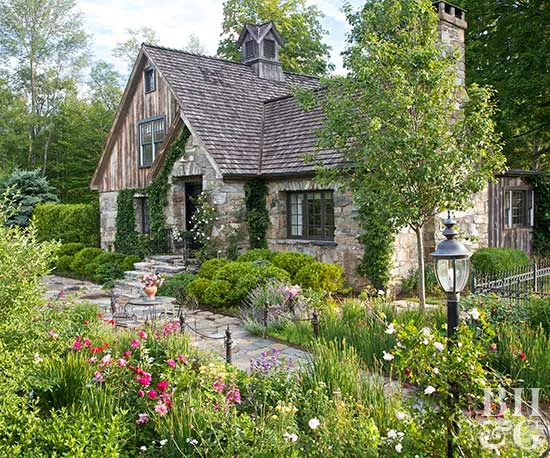
7. Choose Vintage Accessories
Accessorize with antique or vintage items. In cottage gardens, you’re more likely to find garage-sale bargains than high-ticket purchases. An old, dented watering can or a gate with peeling paint can work nicely.
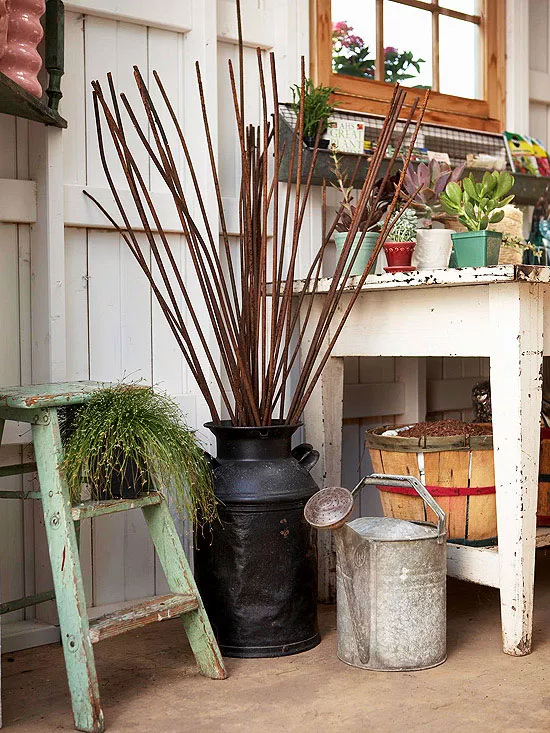
8. Employ the Unexpected
Don’t be afraid to find creative uses for old items. For example, an old chicken feeder might become a fun planter, or a rusty trowel could be a great gate handle.
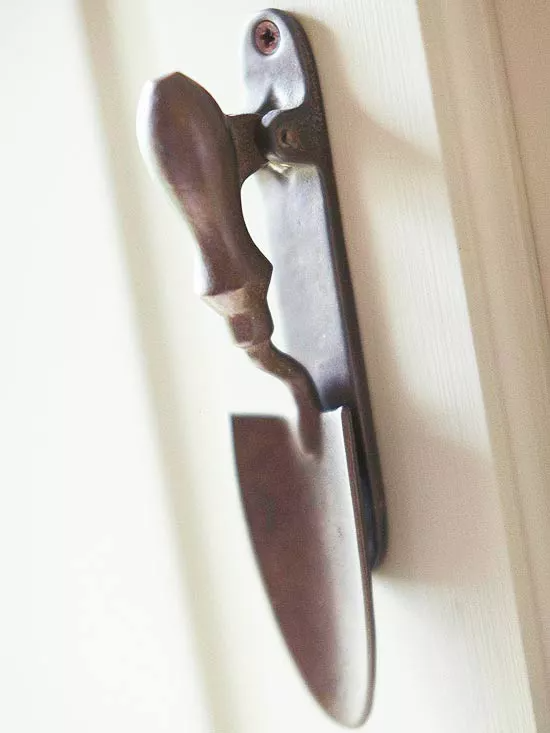
9. Fit in a White Picket Fence
Though not every cottage garden has a white picket fence, the two do seem to go hand-in-hand. You don’t, however, have to use the fence to as a boundary. A short section simply could hold up favorite floppy perennials.
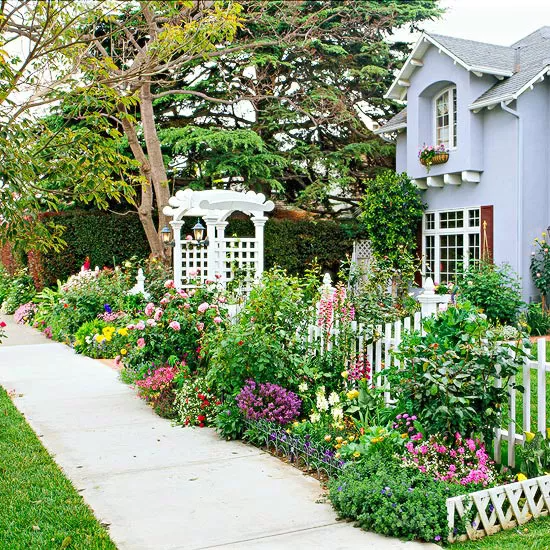
10. Do What You Love
While all these elements are commonly found in a cottage garden, the biggest rule is not trying to follow the rules. Create a look you love. Plant what you like, how you like it, for a delightful garden that suits you.
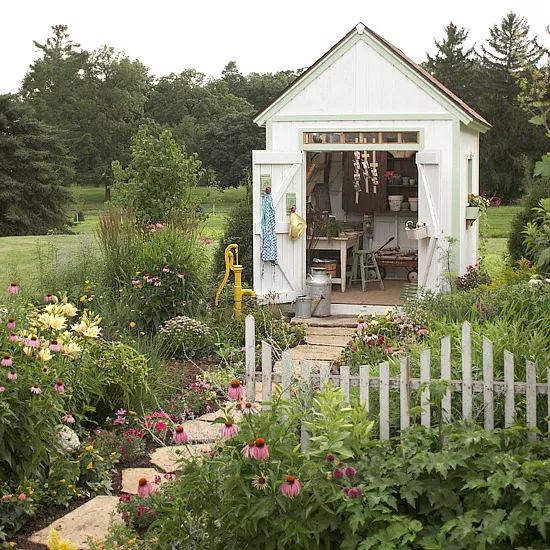
11. Offer Inviting Seating
A table and chairs beckon visitors to sit and enjoy this stunning cottage garden.
